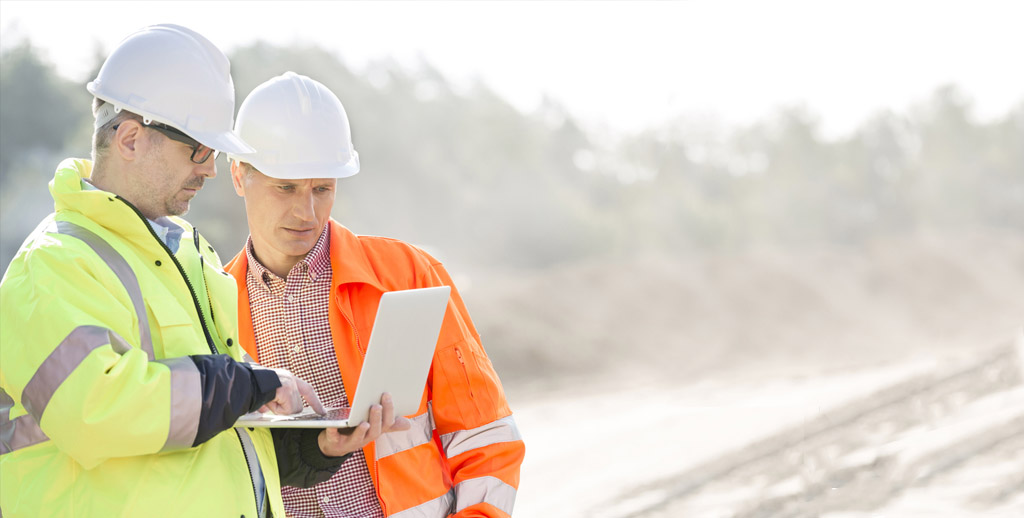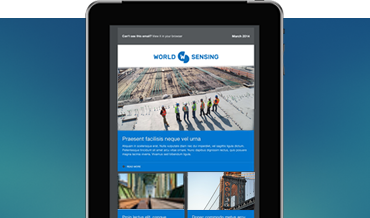Mining Technology: Answering Professionals’ Burning Questions about Wireless Monitoring
More and more industries where risk management is important are using wireless technology to monitor their operations. Mining operators, in charge of long-term projects which can last more than a decade, want to rely on digital advances like IoT wireless monitoring to increase safety and boost productivity.
Worldsensing engineers joined mining experts from Australia and South Africa in the webinar The Latest Technologies for Managing Risks in Mines to examine the key challenges mining owners and engineers face related to monitoring and how IoT-based technologies can help them outline and implement a risk management strategy.
The mining experts participating were Ben Scott, Technical Manager at Geomotion Australia, Stéphane Cantin, VicePresident Execution Excellence at Ramjack Technology Solutions, Ángela Lluch, geologist and construction engineer at Worldsensing, and Fernando Pérez, mining engineer and expert in wireless technology at Worldsensing. The group discussed questions posed by the audience during the dedicated Q&A session. Their answers are summarized in this article.
If I install wireless monitoring underground, are there certain types of materials or ores that will interfere with the radio frequencies?
Some materials, such as ferromagnetic materials, will most likely reduce the radio communication in the area close to the ferromagnetic source. In contrast, LoRa technology has good tolerance to electromagnetic noise.
Wireless monitoring can provide near real-time data from in-ground geotechnical sensors. But up to now, most of the in-ground sensors are still manually read and obtain sporadic readings. In terms of legislation, why do you think near real-time data is not yet mandatory for mines?
The mining industry just needs some time to adopt the latest technologies. Before, for tailings dams especially, the need to replace batteries frequently made it difficult to push for a system which was not perceived as cost-effective and reliable. But as the battery and wireless technology has improved, these systems have become much easier to implement and to justify as an investment. The savings and safety benefits may eventually reduce insurance costs and push legislators to make wireless monitoring a basic requirement in mining.
We already have an existing wireless monitoring system. Is your system capable of integration with other systems or do we need to replace everything?
You can keep the two systems in parallel and progressively implement Worldsensing in any new sensor that is installed. Existing nodes which fail can also progressively be replaced.
Is it possible to change the sampling rate of sensors after they have been configured?
Yes, it is possible. The gateway or gateways installed can be accessed remotely via Internet or a local network connection. The Worldsensing gateway comes with a software interface from which it is possible to change the sampling rate of each node. All nodes can be changed at once or, if needed, just the sampling rate of the nodes the client wants to.
What is the risk of damage to the sensors through theft, accidental damage or sabotage? Has the panel had any personal experience in this regard?
Yes, we experienced that situation in some mines in Africa or Latin America. We have some nodes in a polycarbonate enclosure and with an internal antenna. These nodes are less vulnerable to vandalism. Using an external enclosure is also possible.
In extreme situations a metal box can be used. Some users have adopted this option with good results. Even in these circumstances, the data loggers can still send readings to the gateway up to 2 kilometers away. However, our recommended solution is a plastic or fiberglass box.
How can I convince my company to adopt this technology when the Board of Directors does not care about it in spite of all the viable options? Are there phases or steps we can follow?
It may be difficult to convince companies that have no experience in the use of wireless technology but having information about the benefits is helpful: costs are reduced, data acquired increases, human error in the readings is avoided and workers’ safety is ensured. Mining corporations can calculate in advance the expected ROI of deploying this technology and to what extent it will help them boost productivity and increase safety. The main elements to promote wireless monitoring in your organization are summarised in this infographic.
We are using several piezometers and SAAF (Shape Accel Array Field) for tailings dam monitoring. The problem is that during TSF (Tailings Storage Facility) construction work, excavations and earthworks, our underground or ground monitoring equipment can get damaged and broken. Can you suggest any solution for that? We have a TSF which is constructed under downstream design.
In civil works it is common practice to protect in-soil instrumentation by installing an enclosure such as a perimeter steel bar fence that allows the presence of instrumentation to be easily identified. It is also important during TSF construction to have a highly flexible monitoring system. For example, Worldsensing equipment can easily be relocated and reinstalled during and after the construction and excavation works.
With regard to tailings dams, is it possible to monitor groundwater level without piezometer cables?
The best option is to have a cable from the piezometer to the ground surface where the node can be installed. Some experimental tests have tried to transmit directly from the pressure sensor. However, the waves have to pass through both saturated and unsaturated soil. This can be technically challenging and most likely expensive, in case it is even possible. Also, the batteries have to be placed in the piezometer, so replacing the batteries after the installation will not be possible.
Is it possible to extend the maximum number of channels per node to more than 5 channels, e.g. each node connected with 10 VW strain gauges?
Currently Worldsensing Vibrating Wire Node 5-Channel has provision for five channels. To connect up to 10 VW strain gauges, two nodes would be necessary.
Can you integrate Worldsensing data loggers and gateways with existing servers? How?
Yes, we can. There is a full variety of ways of communicating between internal servers. Since mining operators usually work with their own internal servers, we connect our gateway to their internal server through FTP or by using Modbus communication protocol.

